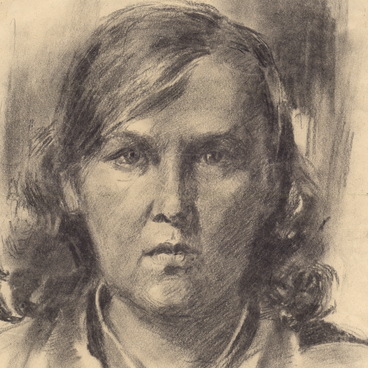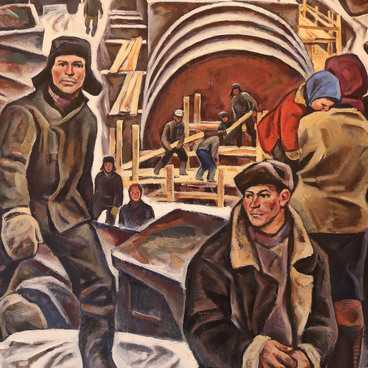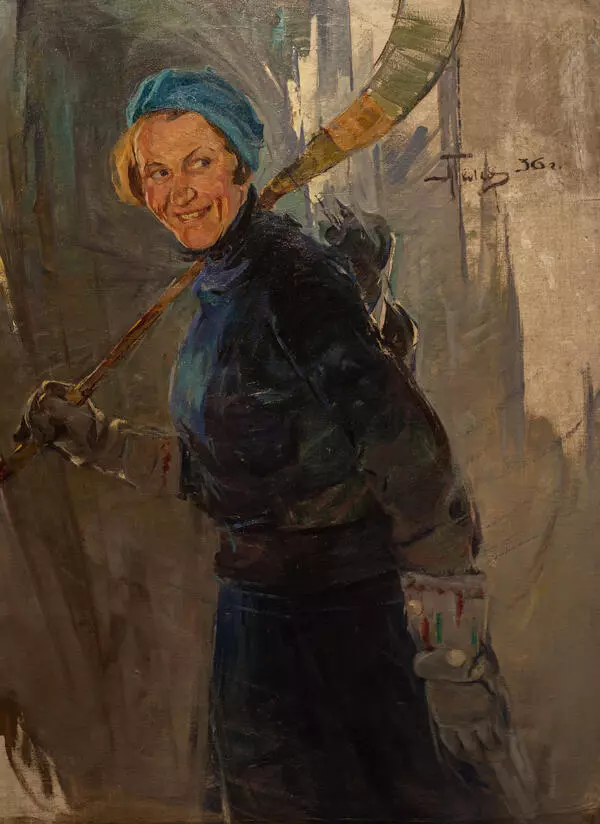The portrait of a pioneer was painted by the famous Ural artist and teacher German Alexandrovich Melentyev. His works encompass such different genres as historical-revolutionary, genre painting, and landscape, and allude to the subject of industrial construction sites in the Urals. A special place in Melentyev’s heart was occupied by portraits in the style of socialist realism.
The art style of socialist realism took shape in the 1920s–1930s and was considered more than just a trend. It became the official Soviet aesthetics and the main style of the national culture and art. Socialist realism turned art into a powerful tool of ideological propaganda. The works that “depicted life in its revolutionary development” prevailed over everything else. The main values and artistic principles of socialist realism with its specific and ideological content determined the way life was portrayed.
In the mid-1930s, the trend embraced the principle of narodnost (national values), which implied that art should be accessible to the masses and correlate with their lives and interests. Life-affirming enthusiasm and idealistic revolutionary heroism were other characteristic features of the works of that period.
The portrait genre was also used to create the image of a New Soviet person, so that the viewers could look at the paintings and see an example to follow, albeit somewhat exaggerated. The image was to embody a person both idealistic and ordinary. So, it is no coincidence that the sitters for Melentyev’s portraits were a leading agriculturalist, a professor, a steelmaker, and a worker. The series includes the “Portrait of Vitya Petrov”, which depicts an excellent student, a pioneer, and “an example for all the youngsters.”
The boy is portrayed sitting. His gaze is thoughtful, and his posture is relaxed. At the same time, he radiates pragmatism, determination, and belief in a brighter future. In his portraits, Melentyev often focused on the figure of the sitter rather than on the background, which was either blank or undetailed. In this particular case, he used the technique of chiaroscuro while depicting the face, highlighted the texture of the fabric, and added the red neckerchief as an attribute of belonging to the pioneers.
The art style of socialist realism took shape in the 1920s–1930s and was considered more than just a trend. It became the official Soviet aesthetics and the main style of the national culture and art. Socialist realism turned art into a powerful tool of ideological propaganda. The works that “depicted life in its revolutionary development” prevailed over everything else. The main values and artistic principles of socialist realism with its specific and ideological content determined the way life was portrayed.
In the mid-1930s, the trend embraced the principle of narodnost (national values), which implied that art should be accessible to the masses and correlate with their lives and interests. Life-affirming enthusiasm and idealistic revolutionary heroism were other characteristic features of the works of that period.
The portrait genre was also used to create the image of a New Soviet person, so that the viewers could look at the paintings and see an example to follow, albeit somewhat exaggerated. The image was to embody a person both idealistic and ordinary. So, it is no coincidence that the sitters for Melentyev’s portraits were a leading agriculturalist, a professor, a steelmaker, and a worker. The series includes the “Portrait of Vitya Petrov”, which depicts an excellent student, a pioneer, and “an example for all the youngsters.”
The boy is portrayed sitting. His gaze is thoughtful, and his posture is relaxed. At the same time, he radiates pragmatism, determination, and belief in a brighter future. In his portraits, Melentyev often focused on the figure of the sitter rather than on the background, which was either blank or undetailed. In this particular case, he used the technique of chiaroscuro while depicting the face, highlighted the texture of the fabric, and added the red neckerchief as an attribute of belonging to the pioneers.


